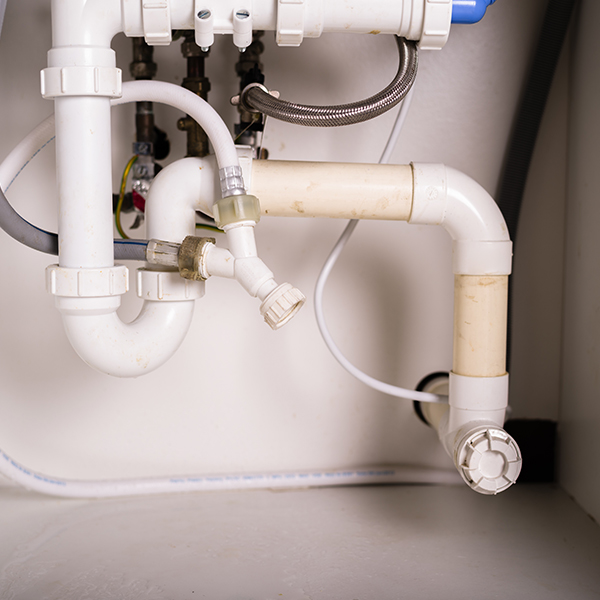
Water Damage from Leaks: Kitchen or Vanity Sink
Water Damage from Leaks: Kitchen or Vanity Sink
Household leaks waste an enormous amount of water nationwide every year. That makes it quite expensive in more ways than one. According to the EPA (Environmental Protection Agency), a leaky faucet that drips at the rate of one drip per second can waste more than 3,000 gallons per year. That’s the amount of water needed to take more than 180 showers! It happens to all of us at some point, however, especially if our home is 15 years old or more. It’s enough to ruin your day, but the longer you leave it, the worse it will get. You will find the most common sites for leaks in relation to kitchen and vanity sinks listed below.
Faucet leaks: The valve seat connects the faucet to the sink which can corrode over time. Also check for failed washers or worn gaskets. You may see a leak around the sink or underneath the counter if the faucet or parts of it need maintenance.
Water supply lines: These can be copper, plastic or galvanized water lines that can wear out and corrode. Be sure to check both ends of the hoses. You many have three if you have a sprayer. Check the gaskets to see if they need to be replaced.
Drain line: Metal drain lines can rot, and plastic can crack or pull apart and need replacement. This can be a difficult repair. You may need a plumber for this one.
Faulty Valves: Inspect the hot and cold shut off valves for any leaks or corrosion. If so, they will need to be replaced.
P-Trap Leak: This is the curved shaped pipe under the sink. There are two compression nuts that hold the P-trap together. If the leak is coming from one of the nuts, tighten it by hand or use pliers. Try not to over tighten it, however. Make sure to turn off the water at the inlet valve before tightening the nut or you can end up with a watery mess.
Clogged drainpipe: Clogs in the drainpipe or P-Trap can create unwanted pressure, causing the pipe to eventually crack and develop a leak. If your sink isn’t draining well and seems to be leaking, this could be the problem. This is where a bucket and some towels may come in handy.
Garbage Disposal: When the garbage disposal is the source of the leak, determine if it is an internal or external leakage. If the leak is coming from the top, check connections and seals. Check the mounting bolts to be sure they are tight. If it is leaking from the bottom, the seal has probably deteriorated or the shell itself is broken. If the leak is coming from the side of the disposal, it is likely the leak is coming from the supply lines and not the disposal itself.
Give Us a Call!
A leak can cause extensive damage to walls, floors, and cabinets. Hiring a professional restoration team like Water Extraction Experts can give you peace of mind that your home is in good hands. We are equipped to guide you through the process of restoring water damaged areas, repairing your home, and getting you back to your life as soon as possible.
Water Extraction Experts specializes in water damage restoration, sewage cleanup, mold removal and flood damage cleanup.
EMERGENCY 24/7 WATER DAMAGE
CALL: 505-250-6500
